
Peter Barton Wilson is an American politician. A member of the Republican Party, he served as a United States Senator and as the 36th Governor of California.
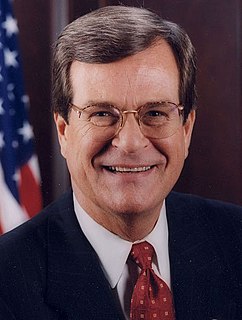
The United States Senate elections, 2002 featured a series of fiercely contested elections that resulted in a victory for the Republican Party, which gained two seats and thus a narrow majority from the Democratic Party in the United States Senate. The Senate seats up for election, known as "class 2" Senate seats, were last up for regular election in 1996. The election was held on November 5, 2002, almost fourteen months after the September 11, 2001 attacks.

The 2000 United States Senate elections, was held on November 7, 2000. The elections coincided with other federal and state elections, including the presidential election which was won by Republican George W. Bush. It featured a number of fiercely contested elections that resulted in a victory for the Democratic Party, which gained a net total of four seats from the Republican Party. This election marked the first election year since 1988 where Democrats made net gains in the Senate.
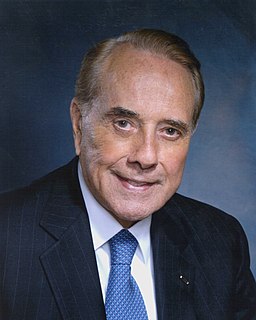
The 1994 United States Senate elections were elections held November 8, 1994, in which the Republican Party was able to take control of the Senate from the Democrats. In a midterm election, the opposition Republicans held the traditional advantage. Congressional Republicans campaigned against the early presidency of Bill Clinton, including his unsuccessful health care plan.

The 1998 United States Senate elections were held on November 3 and seen as an even contest between the Republican Party and Democratic Party. While the Democrats had to defend more seats up for election, Republican attacks on the morality of President Bill Clinton failed to connect with voters and anticipated Republican gains did not materialize. The Republicans picked up open seats in Ohio and Kentucky and narrowly defeated Democratic incumbent Carol Moseley Braun (Illinois), but these were cancelled out by the Democrats' gain of an open seat in Indiana and defeats of Republican Senators Al D'Amato and Lauch Faircloth. The balance of the Senate remained unchanged at 55–45 in favor of the Republicans. With Democrats gaining five seats in the House of Representatives, this marked the first time since 1934 that the out-of-presidency party failed to gain congressional seats in a mid-term election, and the first time since 1822 that the party not in control of the White House failed to gain seats in the mid-term election of a President's second term. These are the last senate elections that resulted in no net change in the balance of power.

The 1996 United States Senate elections coincided with the presidential election, in which Democrat Bill Clinton was re-elected President.

The 1982 United States Senate elections were held on November 2, 1982. They were elections for the United States Senate following Republican gains in 1980. A total of four seats changed hands between parties, and the lone independent, Senator Harry Byrd Jr., retired. Democrats made a net gain of one seat in the elections. A special election in 1983 was then held after the winner of Washington's 1982 election died at the beginning of the term.

The United States Senate elections, 2006 were held on November 7, 2006, with all 33 Class 1 Senate seats being contested. The term of office for those elected in 2006 ran from January 3, 2007, to January 3, 2013. Prior to the election, the Republican Party controlled 55 of the 100 Senate seats.

Elections to the United States Senate were held November 4, 2008 with 35 of the 100 seats in the Senate being contested. Thirty-three seats were up for regular elections; the winners were eligible to serve six-year terms from January 3, 2009 to January 3, 2015, as members of Class 2. There were also two special elections, the winners of those seats would finish the terms that ended January 3, 2013.

The 2006 California gubernatorial election occurred on November 7, 2006. The primary elections took place on June 6, 2006. The incumbent Republican Governor, Arnold Schwarzenegger, won re-election for his first and only full term. His main opponent was California State Treasurer Phil Angelides, the California Democratic Party nominee. Peter Camejo was the California Green Party nominee, Janice Jordan was the Peace and Freedom Party nominee, Art Olivier was the California Libertarian Party nominee, and Edward C. Noonan was the California American Independent Party nominee.
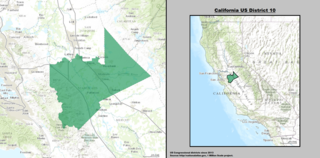
California's 10th congressional district is a congressional district in the U.S. state of California. Currently, the 10th district encompasses an area of the northern San Joaquin Valley.

The 2010 United States elections were held on Tuesday, November 2, 2010, in the middle of Democratic President Barack Obama's first term. During this midterm election year, all 435 seats in the United States House of Representatives and 37 of the 100 seats in the United States Senate were contested, along with 39 state and territorial governorships, 46 state legislatures, four territorial legislatures and numerous state and local offices. Approximately 82.5 million people voted.
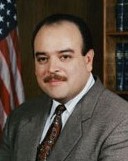
The 1998 California lieutenant gubernatorial election occurred on November 3, 1998. The primary elections took place on June 2, 1998. State Assemblyman and Speaker of the Assembly Cruz Bustamante, the Democratic nominee, decisively defeated the Republican nominee, State Senator Tim Leslie, to succeed the incumbent Gray Davis, who chose not to seek re-election in favor of running for governor.

The 1994 California lieutenant gubernatorial election occurred on November 8, 1994. The primary elections took place on March 8, 1994. State Controller Gray Davis, the Democratic nominee, decisively defeated the Republican nominee, State Senator Cathie Wright, to succeed incumbent Leo T. McCarthy, who was retiring after three terms.

The 1994 California State Treasurer election occurred on November 8, 1994. The primary elections took place on March 8, 1994. The Republican nominee, Board of Equalization Chairman Matt Fong, narrowly defeated the Democratic nominee, Phil Angelides, for the office previously held by incumbent Kathleen Brown, who chose not to seek re-election in favor of running for Governor.

The 1994 California Insurance Commissioner election occurred on November 8, 1994. The primary elections took place on March 8, 1994. The Republican nominee, Chuck Quackenbush, narrowly defeated the Democratic nominee, State Senator Art Torres, for the office previously held by incumbent John Garamendi, who chose not to seek re-election in favor of running for Governor.
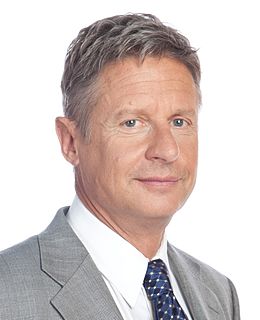
An election for governor and lieutenant governor of New Mexico was held on November 8, 1994, for the four-year term beginning on January 1, 1995. Candidates for governor and lieutenant governor ran on a ticket as running mates.

The 2012 United States presidential election in Arizona took place on November 6, 2012, as part of the 2012 General Election in which all 50 states plus The District of Columbia participated. Arizona has been won by the Republican nominee for president in every election since 1952 except when President Clinton narrowly carried the state in 1996. No Democrat has won a majority in the state since Harry Truman in 1948. Arizona voters chose 11 electors to represent them in the Electoral College via a popular vote pitting incumbent Democratic President Barack Obama and his running mate, Vice President Joe Biden, against Republican challenger and former Massachusetts Governor Mitt Romney and his running mate, Congressman Paul Ryan. Prior to the election, all 17 news organizations considered this a state Romney would win, or otherwise considered as a safe red state. Arizona was won by Romney with a 9.03% margin.

The 2012 United States presidential election in California took place on November 6, 2012, as part of the 2012 general election in which all 50 states plus The District of Columbia participated. California voters chose 55 electors, the most out of any state, to represent them in the Electoral College via a popular vote pitting incumbent Democratic President Barack Obama and his running mate, Vice President Joe Biden, against Republican challenger and former Massachusetts Governor Mitt Romney and his running mate, Congressman Paul Ryan.

The 1912 United States presidential election in New Jersey took place on November 5, 1912. All contemporary 48 states were part of the 1912 United States presidential election. New Jersey voters chose 14 electors to the Electoral College, which selected the president and vice president.























